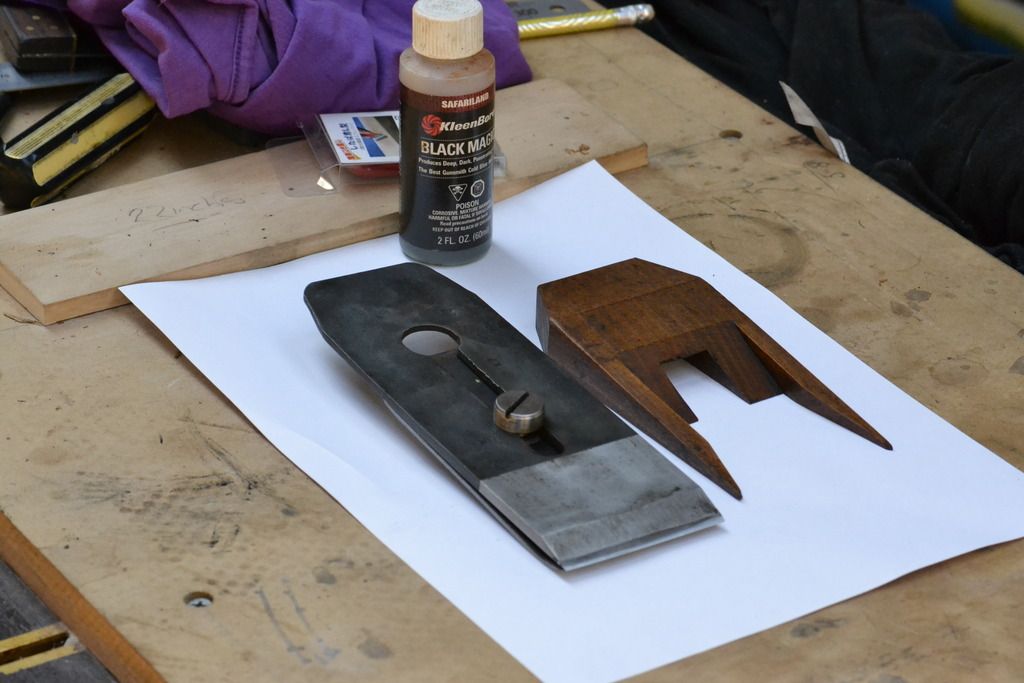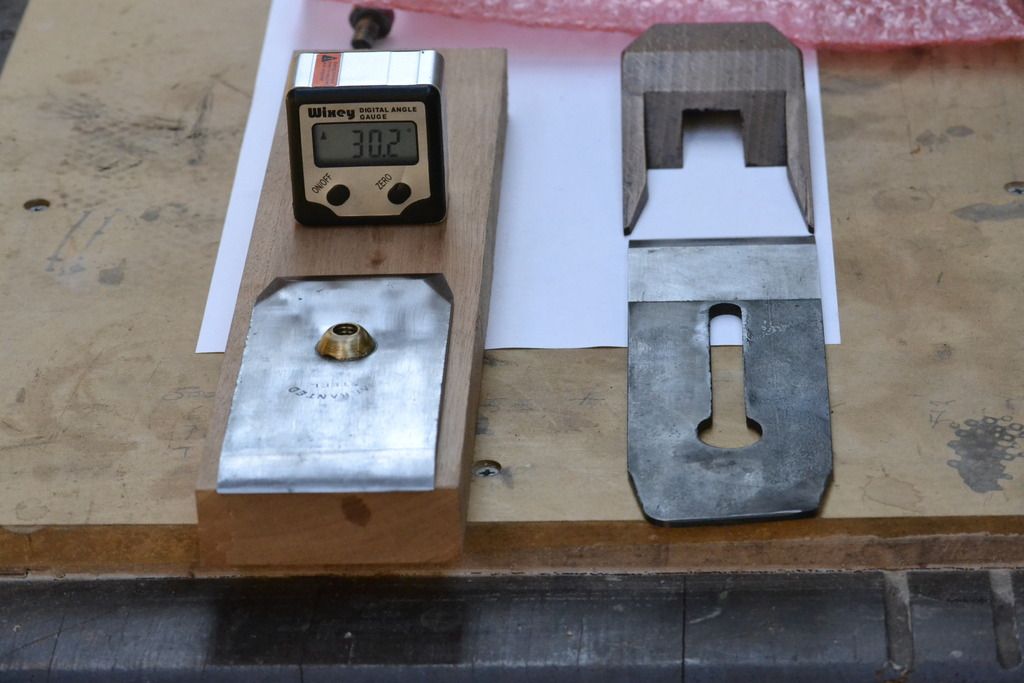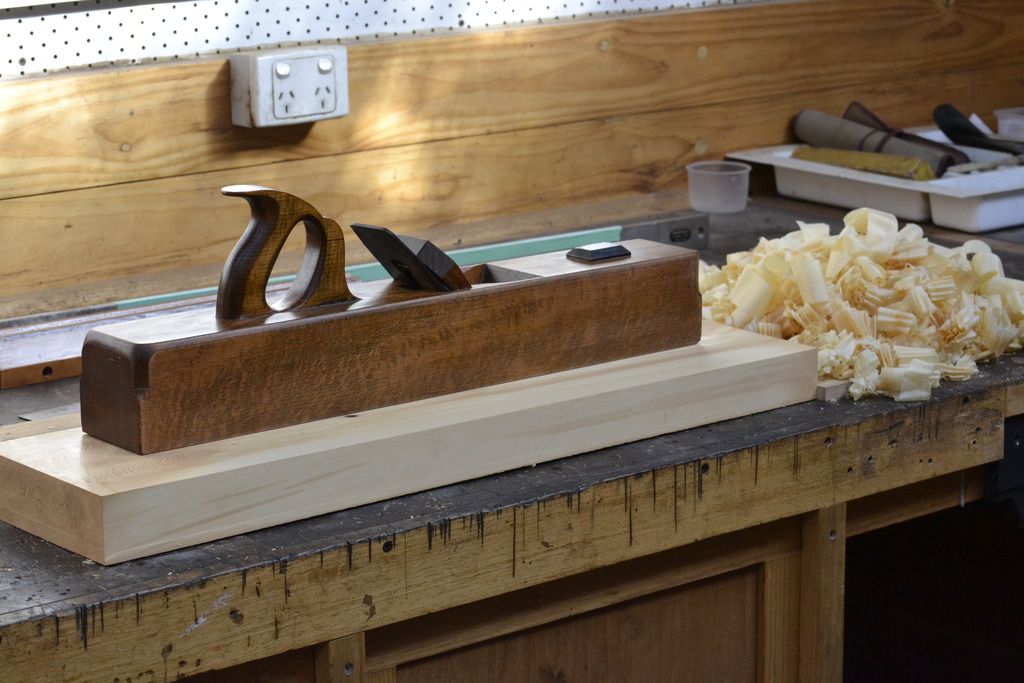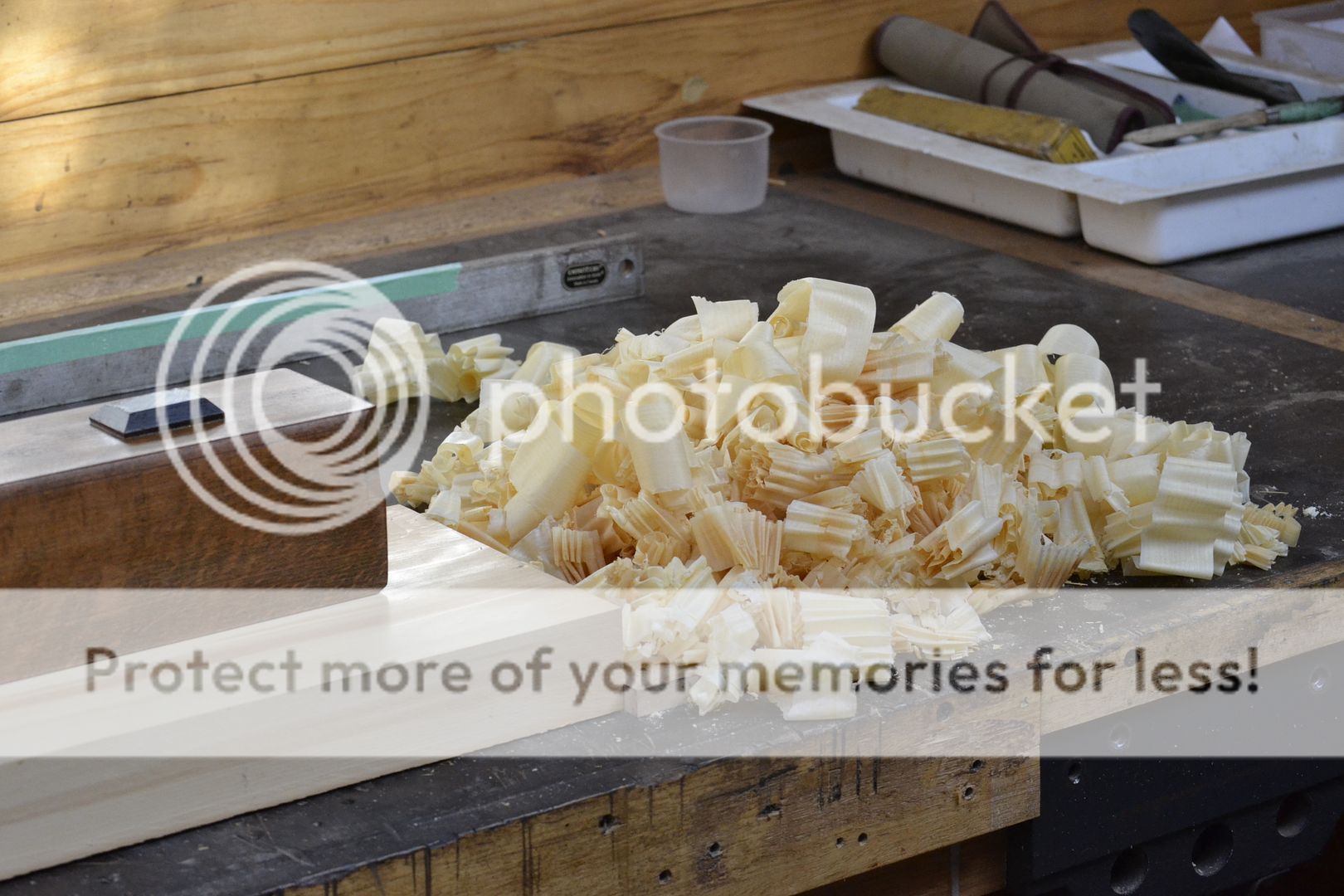swagman
Established Member
Is Ron Hock is also stuck in the pre-2012 era,
Chip Breakers
Cap Irons (Chip Breakers, Back Irons, etc.) for Traditional Stanley Planes. To maximize your plane's performance, a thicker chip breaker (cap iron) can stabilize the blade's cutting edge reducing vibration and chatter. Set your breaker very close to the cutting edge to best prevent tear-out. HOCK Chip Breakers are 3mm thick (.118"), almost twice as thick as a stock chip breaker. A knurled cap screw is included. http://www.hocktools.com/products/bp.html
What has made this discussion all the more confusing, is when you read comments from someone who has a very close liaison with LV/ Veritas, as an web based Tool Reviewer, openly criticizing LN (a competing manufacturer) as being stuck in the pre-2012 era with their interpretation on the role of the Cap Iron, but when you visit LV/ Veritas own site, they are applying the exact same description. Its either LV/ Veritas are promoting a description that is totally out of sink with their own beliefs, or the person suggesting those descriptions are out-dated, is applying his own independent understanding that contradicts that being supplied by LV/ Veritas.
My own personal view which in part focuses on Baileys use of an 0.085" thin Plane Iron, is that the Cap Iron served 3 important purposes, the 1st as a connection point for the adjuster yoke, 2nd as a tensioner to reduced chatter and vibration felt through the cutting edge, 3rd, as a methodology to reduce tear-out on reverse grain.
Moving on to the current trend by manufacturers in supplying a much thicker Plane Iron. imo,this redirects the Cap Irons role further away from that of a tensioner to the Plane Iron, and more towards a role to inhibit tear-out. Bearing this in mind, what's unclear to me, is why the need to also increase the Cap Irons thickness.
I would like to also include my own thoughts on the use of the Cap Iron within traditional Wedge Abutment Bench Planes. 2 important considerations. 1st, the general shape of these thicker tapered irons used in both single and double iron format are near identical if you discount the slot that's used as mating point for the Cap Iron. 2nd, a wooden bed is better able absorb vibration emanating from the cutting edge, compared to that of a metal bed. Bearing both those factors in mind, imo, the role of the Cap Iron was less directed to that of providing additional tension to the Plane Iron, and more directed towards supplying a different type of approach to that being supplied by a high angle bed, in reducing the potential of tear-out on reverse grain.
As a final wrap up, note the additional tension supplied within the shaping of the Cap Iron used on a Bailey/Stanley Plane, to that of a Cap Iron used in conjunction with a tapered iron on a Wooden Bench Plane.
http://www.woodcentral.com/articles/images/935d.jpg

Stewie;
Chip Breakers
Cap Irons (Chip Breakers, Back Irons, etc.) for Traditional Stanley Planes. To maximize your plane's performance, a thicker chip breaker (cap iron) can stabilize the blade's cutting edge reducing vibration and chatter. Set your breaker very close to the cutting edge to best prevent tear-out. HOCK Chip Breakers are 3mm thick (.118"), almost twice as thick as a stock chip breaker. A knurled cap screw is included. http://www.hocktools.com/products/bp.html
What has made this discussion all the more confusing, is when you read comments from someone who has a very close liaison with LV/ Veritas, as an web based Tool Reviewer, openly criticizing LN (a competing manufacturer) as being stuck in the pre-2012 era with their interpretation on the role of the Cap Iron, but when you visit LV/ Veritas own site, they are applying the exact same description. Its either LV/ Veritas are promoting a description that is totally out of sink with their own beliefs, or the person suggesting those descriptions are out-dated, is applying his own independent understanding that contradicts that being supplied by LV/ Veritas.
My own personal view which in part focuses on Baileys use of an 0.085" thin Plane Iron, is that the Cap Iron served 3 important purposes, the 1st as a connection point for the adjuster yoke, 2nd as a tensioner to reduced chatter and vibration felt through the cutting edge, 3rd, as a methodology to reduce tear-out on reverse grain.
Moving on to the current trend by manufacturers in supplying a much thicker Plane Iron. imo,this redirects the Cap Irons role further away from that of a tensioner to the Plane Iron, and more towards a role to inhibit tear-out. Bearing this in mind, what's unclear to me, is why the need to also increase the Cap Irons thickness.
I would like to also include my own thoughts on the use of the Cap Iron within traditional Wedge Abutment Bench Planes. 2 important considerations. 1st, the general shape of these thicker tapered irons used in both single and double iron format are near identical if you discount the slot that's used as mating point for the Cap Iron. 2nd, a wooden bed is better able absorb vibration emanating from the cutting edge, compared to that of a metal bed. Bearing both those factors in mind, imo, the role of the Cap Iron was less directed to that of providing additional tension to the Plane Iron, and more directed towards supplying a different type of approach to that being supplied by a high angle bed, in reducing the potential of tear-out on reverse grain.
As a final wrap up, note the additional tension supplied within the shaping of the Cap Iron used on a Bailey/Stanley Plane, to that of a Cap Iron used in conjunction with a tapered iron on a Wooden Bench Plane.
http://www.woodcentral.com/articles/images/935d.jpg

Stewie;




































